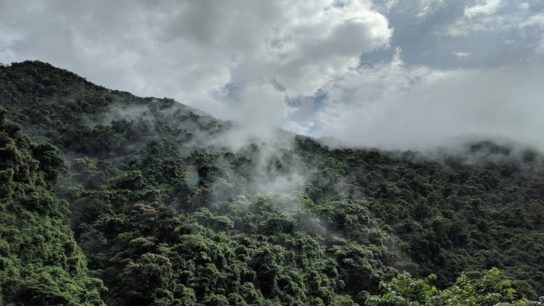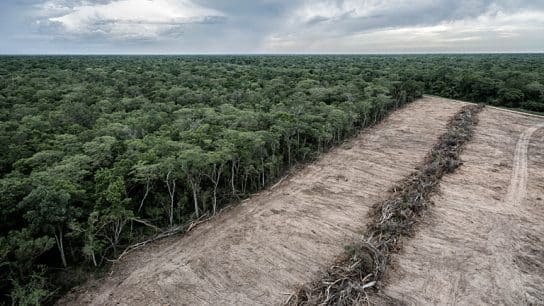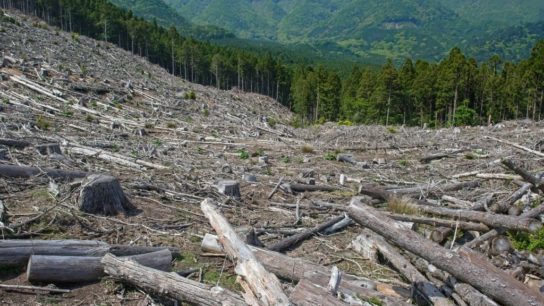As Europe’s waters are under threat from climate change, soil consumption, and expanding urbanization, the European Union is working to improve the policy standards on water management.
—
As the fastest-warming continent, Europe is at the forefront of climate change, grappling with rising temperatures, extreme weather events, and dwindling freshwater reserves. The urgency to revamp its water infrastructure has never been greater, both to safeguard fragile ecosystems and to ensure public health and safety.
A European Commission report released last month revealed that the EU’s water and aquatic ecosystems are under severe pressure. According to the assessment, the majority of its surface water bodies are polluted by chemicals. Just 39.5% of the surface water bodies (such as lakes, rivers, and coastal waters) were found to be in good ecological condition, and only 26.8% achieved good chemical status. Although groundwater bodies continue to achieve good quantitative and chemical status, with 77% of them meeting good chemical health standards, more work needs to be done by member states to meet EU targets on freshwater quality and quantity.
The report confirms the significant challenges the EU faces in protecting its water resources. Despite the comprehensive legal framework put in place to protect and manage water, such as the Water Framework Directive (WFD) and the Groundwater Directive, the EU continues to struggle with deteriorating water quality and mismanaged infrastructure. Pollution, unsustainable land use, urban expansion, climate change as well as a poor enforcement of the regulatory framework have placed a severe strain on Europe’s freshwater supplies.
As a result, Europeans across different countries have been dealing with an ever-increasing rise of natural disasters and limited access to clean water. Southern European regions, in particular, are facing a near-constant state of water stress, where freshwater demand surpasses available surface and groundwater supplies. Countries such as Spain, Italy, and Greece have been experiencing record-breaking droughts, pushing local governments to implement water rationing measures. Meanwhile, flooding events in central and northern Europe highlight the paradoxical nature of the crisis: while some regions are drying up, others are dealing with excess water due to extreme weather patterns.

Agricultural pollution, particularly from intensive livestock farming, has played a significant role in degrading Europe’s water quality. Major issues include nutrient pollution and groundwater contamination from nitrates and phosphorus, which seep into the ground due to poor wastewater management. In surface water bodies, the excess in nutrients cause eutrophication – an increased growth of plant and algae in rivers and coastal waters that leads to oxygen depletion and harm to aquatic ecosystems. The excess algae and organic matter eventually decompose, releasing large amounts of carbon dioxide in the environment.
Recognizing the scale of the issue, the EU is stepping up its efforts. In 2025, the European Commission is set to introduce the Water Resilience Strategy (WRS), a strategic plan designed to tackle water troubles across the bloc. The main goal is to establish a water resilience plan through sustainable water management, availability of clean water, and protecting the EU against water-related risks.
The strategy, also referred to as the EU Blue Deal, is supposed to ensure better water security and water access for citizens and nature, implement a circular economy approach to water management, and protect and restore aquatic ecosystems. These objectives are to be brought forward via both public and private investments, meant to enhance the competitiveness of the EU’s water industry and promote innovations. The Commission intends to prioritize the Water Efficiency First principle, in order to boost water reuse and circularity.
Many environmental organizations, such as WWF Europa, Wetlands International, and the European Environmental Bureau, have long championed stronger water policies, emphasizing that the Water Resilience Strategy must come with clear, legally binding targets. Without enforceable commitments, the strategy risks becoming another well-intentioned policy without real impact.
A smart climate finance strategy will play a crucial role in implementing the strategy. Strengthening Europe’s water infrastructure requires modernizing wastewater treatment plants, restoring degraded wetlands, and improving irrigation techniques to support agriculture while preserving natural water cycles. Additionally, new technological advancements in desalination, water purification, and smart water management systems could be game changers in mitigating the crisis.
There is also a growing push for nature-based solutions (NBS), such as reforestation, restoration and protection of wetlands, sustainable agricultural practices, and green infrastructure of urban areas. Maintaining healthy ecosystems that naturally absorb, filter and distribute waters, like forests and wetlands, is the most efficient method of protecting the environment against flood and droughts. Likewise, agricultural systems that push for non-intensive, organic farming practices will protect water bodies from contaminations, and will preserve the natural ability of the soil to absorb water.
More on the topic: How Can Nature-Based Solutions Help Tackle the Climate Crisis?
NBS are considered a key adaptation measure of the European Green Deal: integrating these approaches into agricultural and industrial practices can improve sustainable management of water resources and is a right step in the direction of achieving net-zero environmental emissions, in line with global climate objectives.
With water scarcity and pollution worsening, the stakes for Europe’s water future have never been higher. The success of the EU Water Resilience Strategy will depend not only on political will but also on cross-border cooperation, public awareness, and industry participation.
As remarked by the European Commission directives, water is a fundamental pillar of life, ecosystems, and economies. As the European Commission moves forward with its ambitious plan, one question arises: will it be enough to secure a sustainable water future for Europe, or will inaction leave the continent parched and vulnerable?
This story is funded by readers like you
Our non-profit newsroom provides climate coverage free of charge and advertising. Your one-off or monthly donations play a crucial role in supporting our operations, expanding our reach, and maintaining our editorial independence.
About EO | Mission Statement | Impact & Reach | Write for us














